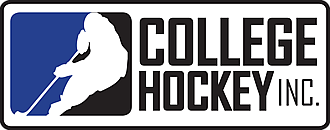College hockey coaches spend a tremendous amount of time and energy scouting and recruiting potential student athletes. If you play for a competitive midget minor, midget major, junior, or high school team, and are an elite player, there is a good a chance that the college coaches know about you.
We highly recommend that American players try out for the USA select festivals that are held in Buffalo, N.Y., every summer. We also recommend you make a list of the schools you are interested in and visit their respective web sites and team pages. Most college hockey teams have a "recruiting questionnaire" on their team web site and it would be beneficial to fill out a questionnaire for each school that interests you.
It can also be worthwhile to create a "hockey resume" to introduce yourself to college coaches.
Click here for tips on writing a hockey resume.

